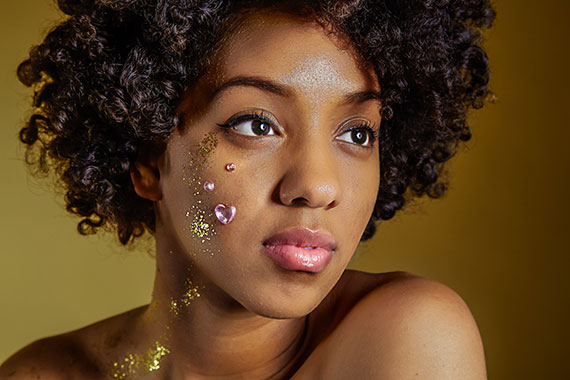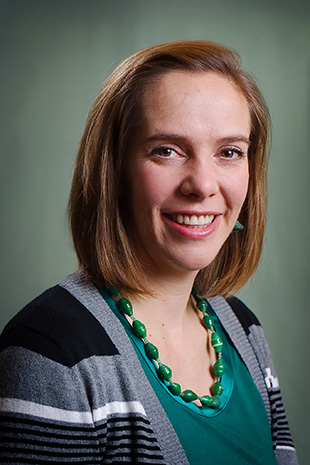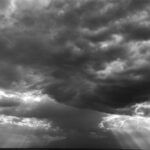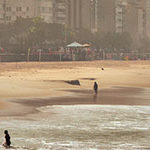In previous articles, we began our study of lighting patterns for portrait photography with broad lighting, short lighting, and split lighting. Now let’s move on to loop lighting. In portrait photography, this lighting pattern tends to be one of the most popular. It’s easy to set up and is flattering to most faces.

Photo by Jessica Felicio
Remember that it’s shadow that defines form in a photograph. This is such a key concept that we even name all of the various lighting patterns by the shadows they create!
While we always have to think about the light in photography, never forget the shadows!
In a loop lighting pattern, we adjust our light so that the shadow of the nose shows up on and forms a little loop upon the subject’s cheek, traveling down as far as the corner of the subject’s mouth.
In our previous studies of lighting patterns, we’ve been discussing the lights and shadows as if the light source was even with the face–the eyes to be more specific. This creates a shadow with no upward or downward slope.
In loop lighting, we want a slightly downward angled shadow (not too much) so we raise the light slightly above eye level. We want the end of the nose to cast a rounded, looped shadow down from the nose to around the corner of the mouth or even a bit shorter.
The shadow goes off to the side; it is not directly under the nose. The area between the upper lip and the nose remains unshadowed.
Of course, shadows are cast directly opposite from the light, so to get a shadow going to the side and down, we need a light positioned on the opposite side and up.
Start with the light off to the side at approximately 45 degrees from the camera. Then tweak and adjust from there. Depending on the subject’s face, the best angle may be a bit more or less than 45 degrees.
Pose your model. Set your light a bit above eye level, move it to about 45 degrees to the camera, and see where the shadow from the nose falls.

photo by Philip Dean
If needed, move the light up and down and side to side until you get the desired shadow shape. Depending on the shape of your model’s face and nose, this adjustment could go from 45 degrees to as little as 30 degrees. In some cases, it could even go past 45 degrees.
Keep in mind that you want to keep this shadow small. The light should travel down the nose (with the opposing shadow between the nose and cheek) and continue from the bottom of the nose creating a loop-shaped shadow running toward the corner of the mouth.
This lighting pattern is good for people with oval-shaped faces. Because of the downward sloping angle of the loop, it will visually lengthen the face a bit. And, to a lesser extent, it can give the appearance of slightly higher cheekbones.
Grab a flashlight and your favorite subject. Have them sit on a chair, and start experimenting with light and shadow. Figure out how they have to angle their face for short and broad lighting. Determine where the light has to be for split lighting and then adjust it to create loop lighting.
Which do you think is better for their face? Why?
The concept of loop lighting may seem so basic and easy to understand that you will most likely want to skip the exercise, but don’t. Get comfortable with not only understanding these portrait photography photo tips but actually doing them. That’s when the learning starts.
About the Author
Dan Eitreim writes for ontargetphototraining.com. He has been a professional photographer in Southern California for over 20 years. His philosophy is that learning photography is easy if you know a few tried and true strategies.
Like This Article?
Don't Miss The Next One!
Join over 100,000 photographers of all experience levels who receive our free photography tips and articles to stay current:






interesting tuts .. . . thank you